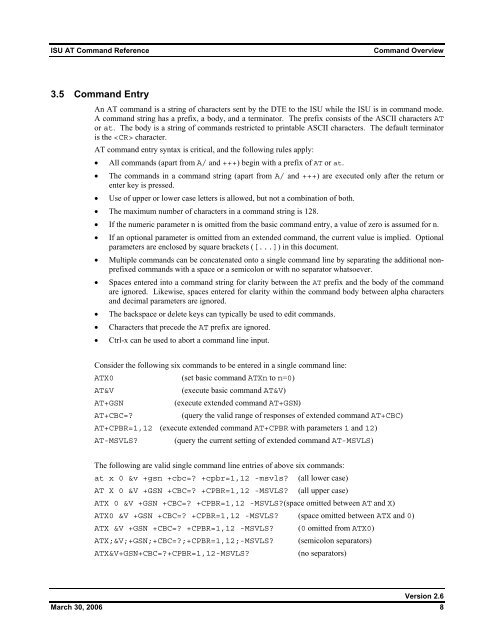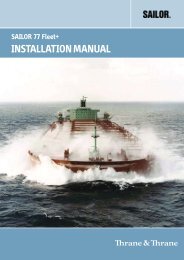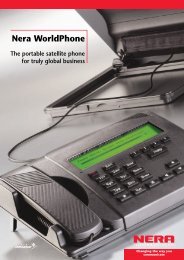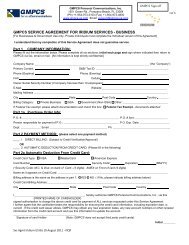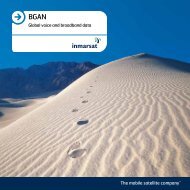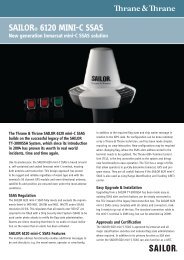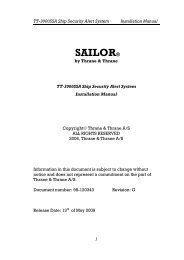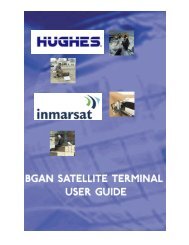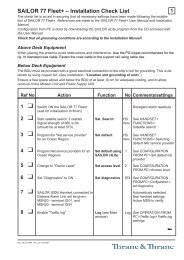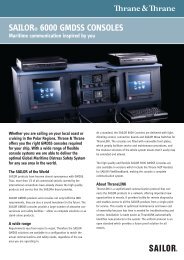ISU AT Command Reference
ISU AT Command Reference
ISU AT Command Reference
You also want an ePaper? Increase the reach of your titles
YUMPU automatically turns print PDFs into web optimized ePapers that Google loves.
<strong>ISU</strong> <strong>AT</strong> <strong>Command</strong> <strong>Reference</strong><strong>Command</strong> Overview3.5 <strong>Command</strong> EntryAn <strong>AT</strong> command is a string of characters sent by the DTE to the <strong>ISU</strong> while the <strong>ISU</strong> is in command mode.A command string has a prefix, a body, and a terminator. The prefix consists of the ASCII characters <strong>AT</strong>or at. The body is a string of commands restricted to printable ASCII characters. The default terminatoris the character.<strong>AT</strong> command entry syntax is critical, and the following rules apply:• All commands (apart from A/ and +++) begin with a prefix of <strong>AT</strong> or at.• The commands in a command string (apart from A/ and +++) are executed only after the return orenter key is pressed.• Use of upper or lower case letters is allowed, but not a combination of both.• The maximum number of characters in a command string is 128.• If the numeric parameter n is omitted from the basic command entry, a value of zero is assumed for n.• If an optional parameter is omitted from an extended command, the current value is implied. Optionalparameters are enclosed by square brackets ([...]) in this document.• Multiple commands can be concatenated onto a single command line by separating the additional nonprefixedcommands with a space or a semicolon or with no separator whatsoever.• Spaces entered into a command string for clarity between the <strong>AT</strong> prefix and the body of the commandare ignored. Likewise, spaces entered for clarity within the command body between alpha charactersand decimal parameters are ignored.• The backspace or delete keys can typically be used to edit commands.• Characters that precede the <strong>AT</strong> prefix are ignored.• Ctrl-x can be used to abort a command line input.Consider the following six commands to be entered in a single command line:<strong>AT</strong>X0(set basic command <strong>AT</strong>Xn to n=0)<strong>AT</strong>&V(execute basic command <strong>AT</strong>&V)<strong>AT</strong>+GSN(execute extended command <strong>AT</strong>+GSN)<strong>AT</strong>+CBC=?(query the valid range of responses of extended command <strong>AT</strong>+CBC)<strong>AT</strong>+CPBR=1,12 (execute extended command <strong>AT</strong>+CPBR with parameters 1 and 12)<strong>AT</strong>-MSVLS? (query the current setting of extended command <strong>AT</strong>-MSVLS)The following are valid single command line entries of above six commands:at x 0 &v +gsn +cbc=? +cpbr=1,12 -msvls? (all lower case)<strong>AT</strong> X 0 &V +GSN +CBC=? +CPBR=1,12 -MSVLS? (all upper case)<strong>AT</strong>X 0 &V +GSN +CBC=? +CPBR=1,12 -MSVLS?(space omitted between <strong>AT</strong> and X)<strong>AT</strong>X0 &V +GSN +CBC=? +CPBR=1,12 -MSVLS? (space omitted between <strong>AT</strong>X and 0)<strong>AT</strong>X &V +GSN +CBC=? +CPBR=1,12 -MSVLS? (0 omitted from <strong>AT</strong>X0)<strong>AT</strong>X;&V;+GSN;+CBC=?;+CPBR=1,12;-MSVLS? (semicolon separators)<strong>AT</strong>X&V+GSN+CBC=?+CPBR=1,12-MSVLS?(no separators)Version 2.6March 30, 2006 8


